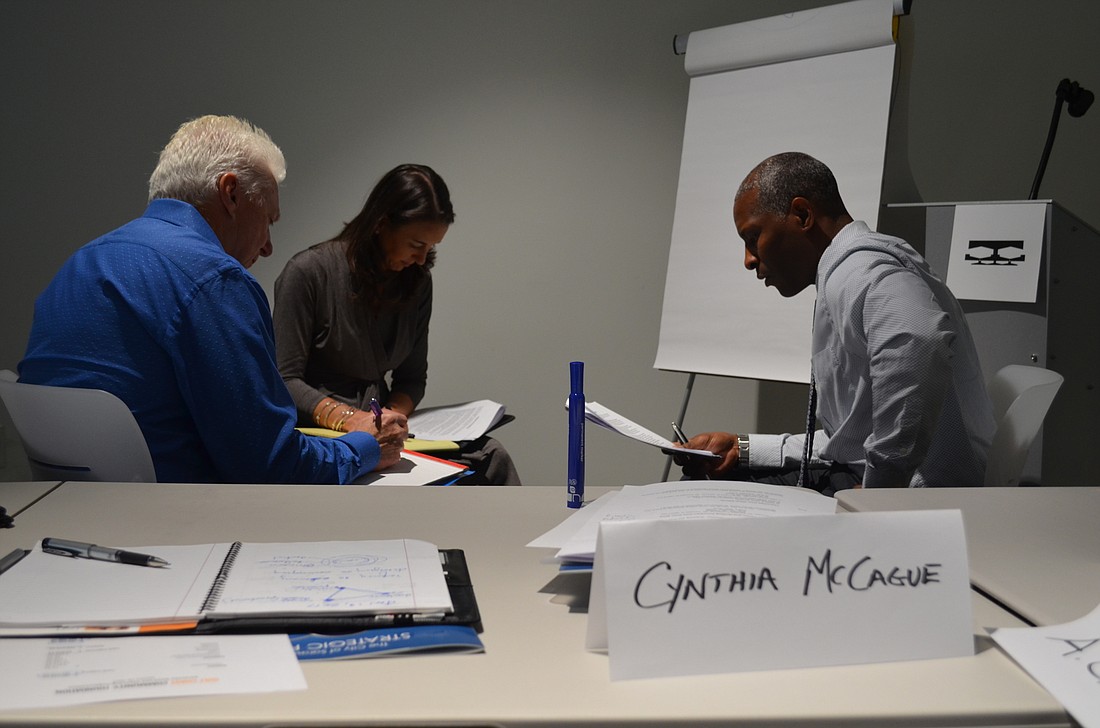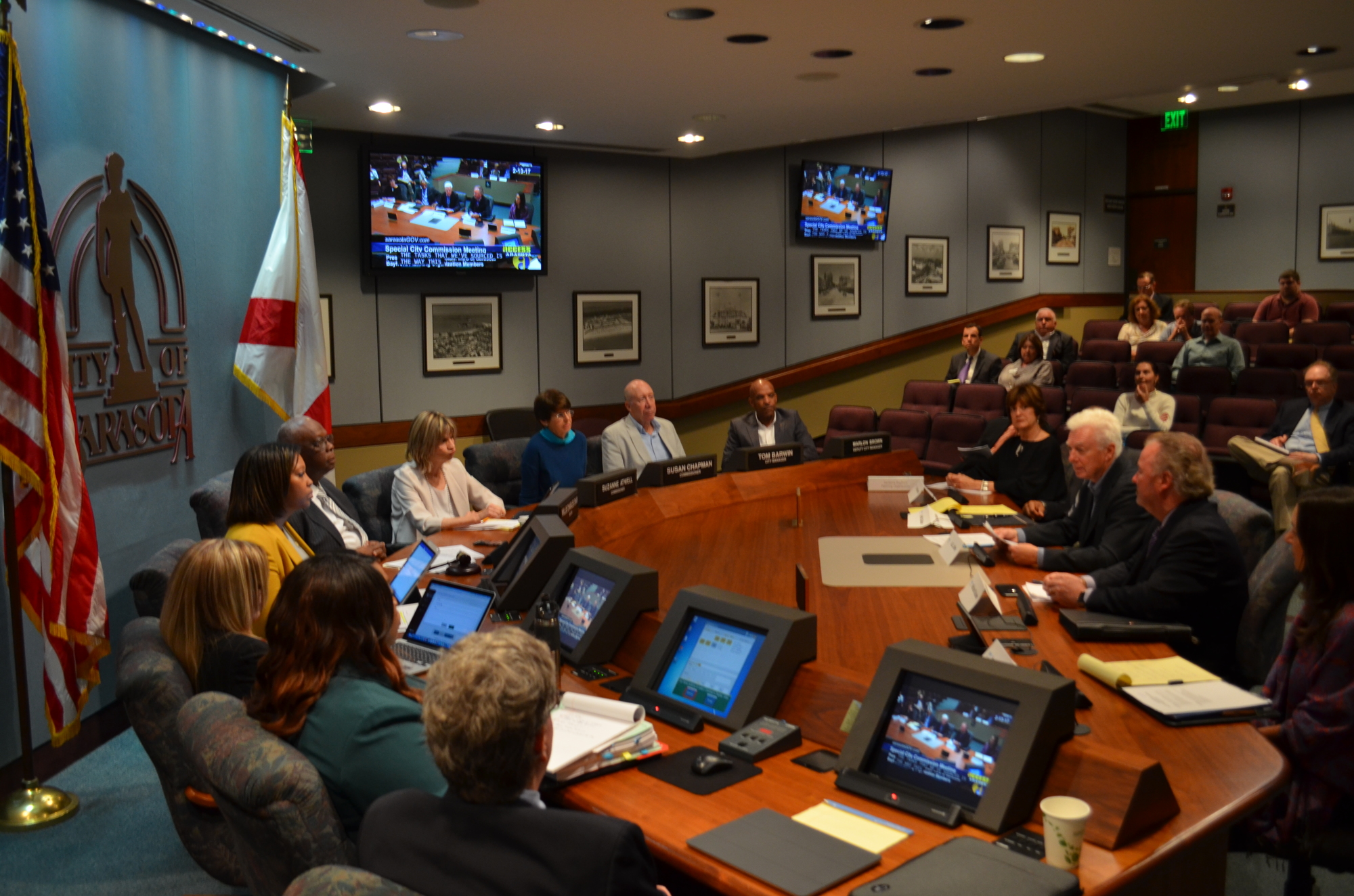- April 24, 2024
-
-
Loading

Loading

A group of nine residents will spend the better part of the next two years — at least — planning the future of 42 acres of city-owned land surrounding the Van Wezel Performing Arts Hall.
It’s an arduous task. It also could be rendered meaningless if, once the work is done, a majority of the City Commission doesn’t want to take action on the plan the group produces.
That’s why, as the Sarasota Bayfront Planning Organization works with a professional planner to devise a vision for redeveloping the public land, the group has a vested interest in making sure there’s broad public support for whatever its final product may be.
The planning organization is an offshoot of Sarasota Bayfront 20:20, the grassroots community group that helped develop a series of guiding principles for revitalizing the city’s bayfront. On Monday, that group had its first formal meeting with the commission.
Although the workshop was held early in the planning process — and the makeup of the commission could change by the time the planning group is done — it helped clarify some of the dynamics of the public-private relationship.
“I do feel like our elected officials want our help,” said Michael Klauber, the leader of Bayfront 20:20 and a member of the planning organization. “They want us to do our homework and talk to the community.”
To some extent, Monday’s meeting let the commissioners share their philosophy regarding bayfront redevelopment with the planning organization. Board members stressed the importance of maintaining public access on the public land. Although Bayfront 20:20 has discussed creating an arts-oriented campus along the bayfront, commissioners also encouraged a mix of uses to cater to a wider swath of residents.
“I don’t think we want to see only the arts there,” Commissioner Liz Alpert said. “To appeal to a different set of demographics and a variety of people, I think you have all sorts of different things.”
Although there was some disagreement regarding the extent to which there might be commercial entities on the city-owned land, the commission sees the bayfront as an opportunity to provide some relief from the increase in high-rise development in the downtown area.
“It’s a place that people aren’t going to say, ‘God, another building — another condo,’” Commissioner Suzanne Atwell said.

The meeting also focused on the expectations the commission has for the bayfront planning organization. Here, there was some tension among the board. Commissioner Susan Chapman expressed a desire to make sure city policymakers had an active voice when the planning process begins in earnest, asking the group how often it anticipated providing updates to the commission.
“I want to make sure we get to ‘yes,’ rather than say, ‘Wait a minute — this is a direction we weren’t anticipating,’” Chapman said.
Commissioner Suzanne Atwell expressed concern that an overly active commission could stymie the momentum of the bayfront planning effort. She voiced confidence in the planning group’s ability to engage the public.
“I want to be careful, as we move along, not to be too parochial in this and not slip into micromanaging,” Atwell said.
Several commissioners endorsed a more deliberate approach to planning for the future of the property. The board sees any project as an important legacy for future generations and encouraged the planning organization to take a long-term view.
Vice Mayor Shelli Freeland Eddie asked the planning organization to do whatever it could do to engage with all demographics, particularly students and young professionals. She said the city should consider its options for raising awareness regarding the bayfront planning process to make sure as much of the community is participating as early as possible.
“I don’t want this to be something where people think, ‘When did that happen?’” Eddie said.
City Manager Tom Barwin is one of the nine members of the planning organization, serving as a conduit between that group and the commission as the planning progresses.
A.G. Lafley, the retired Procter & Gamble CEO serving as the planning organization chairman, said it’s too early to know for sure how often the group will need to check in with the commission. Eventually, he believes it’s the planning organization’s duty to provide the city with strategic choices independent of the influence of any stakeholder groups. He doesn’t want to put a hard timeline on how that process plays out.
“Right now, we’re in a period where we’re opening our mind to what’s possible and trying to understand what’s needed and what’s wanted,” Lafley said. “We’re just beginning.”